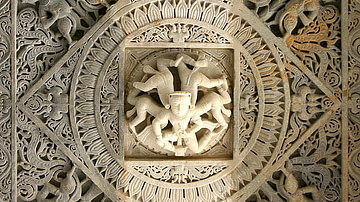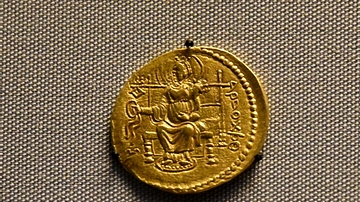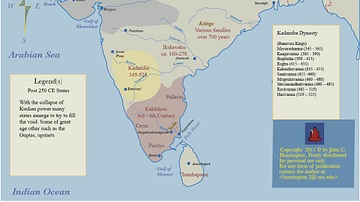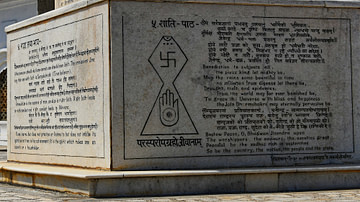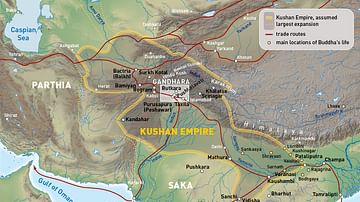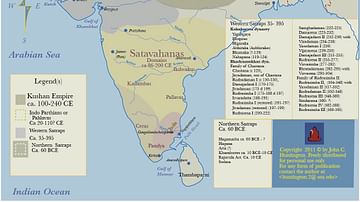Illustration
This head belongs to a jina ("conqueror" or "liberator"), a Jain saint who severed the chain of rebirth and achieved a state of omniscience known as nirvana. Jains believe that there have been 24 jinas, each of whom is known as a tirthankara or "forder," one who fords the gaps between the phenomenal world and liberation. The wide, staring eyes and fullness of the face are characteristic of Mathura sculpture under the Kushan dynasty. The softening of the mouth towards a smile, the relatively elongated earlobes, and the large curls exemplify the changes occurring in late Kushan sculpture at Mathura that would eventually become the Gupta style by the early 5th century CE. This sculpture from India is made of sandstone and dates from c. 50-320 CE. (Iris & B. Gerald Cantor Center for Visual Arts at Stanford University, Stanford, California)
About the Author
Cite This Work
APA Style
Wiener, J. B. (2018, January 16). Head of a Jain Tirthankara. World History Encyclopedia. Retrieved from https://www.worldhistory.org/image/7929/head-of-a-jain-tirthankara/
Chicago Style
Wiener, James Blake. "Head of a Jain Tirthankara." World History Encyclopedia. Last modified January 16, 2018. https://www.worldhistory.org/image/7929/head-of-a-jain-tirthankara/.
MLA Style
Wiener, James Blake. "Head of a Jain Tirthankara." World History Encyclopedia. World History Encyclopedia, 16 Jan 2018, https://www.worldhistory.org/image/7929/head-of-a-jain-tirthankara/. Web. 20 Apr 2025.



